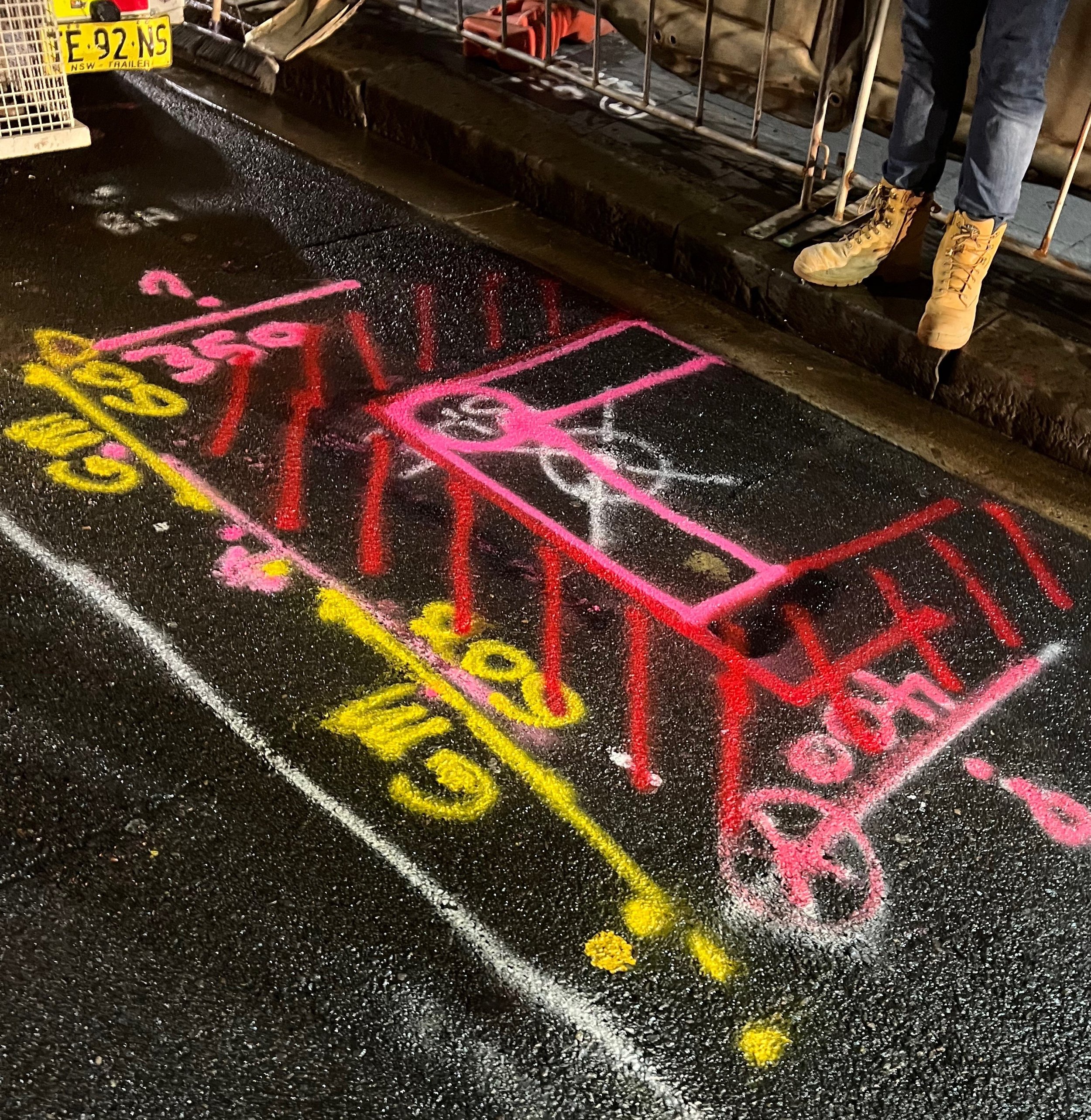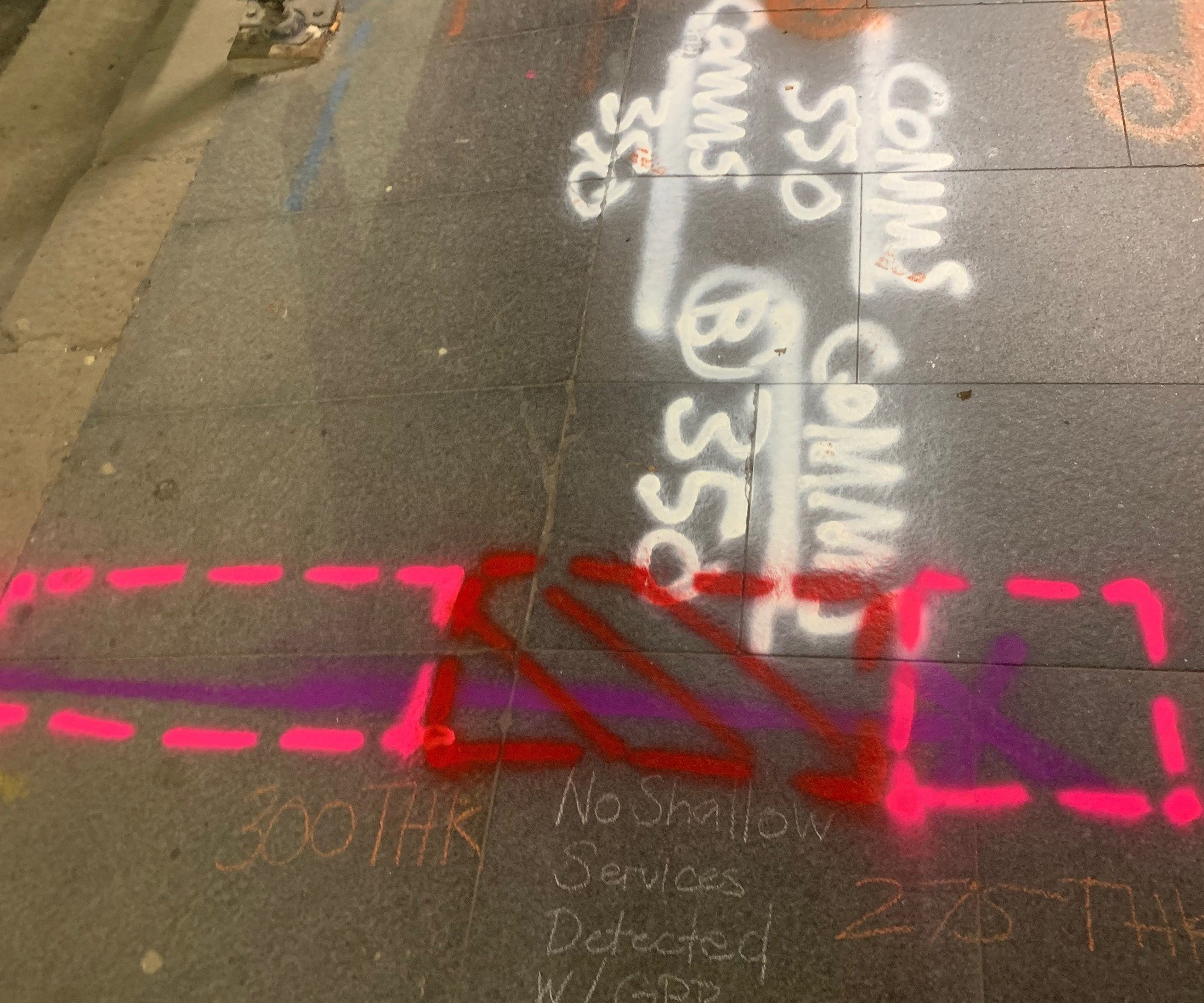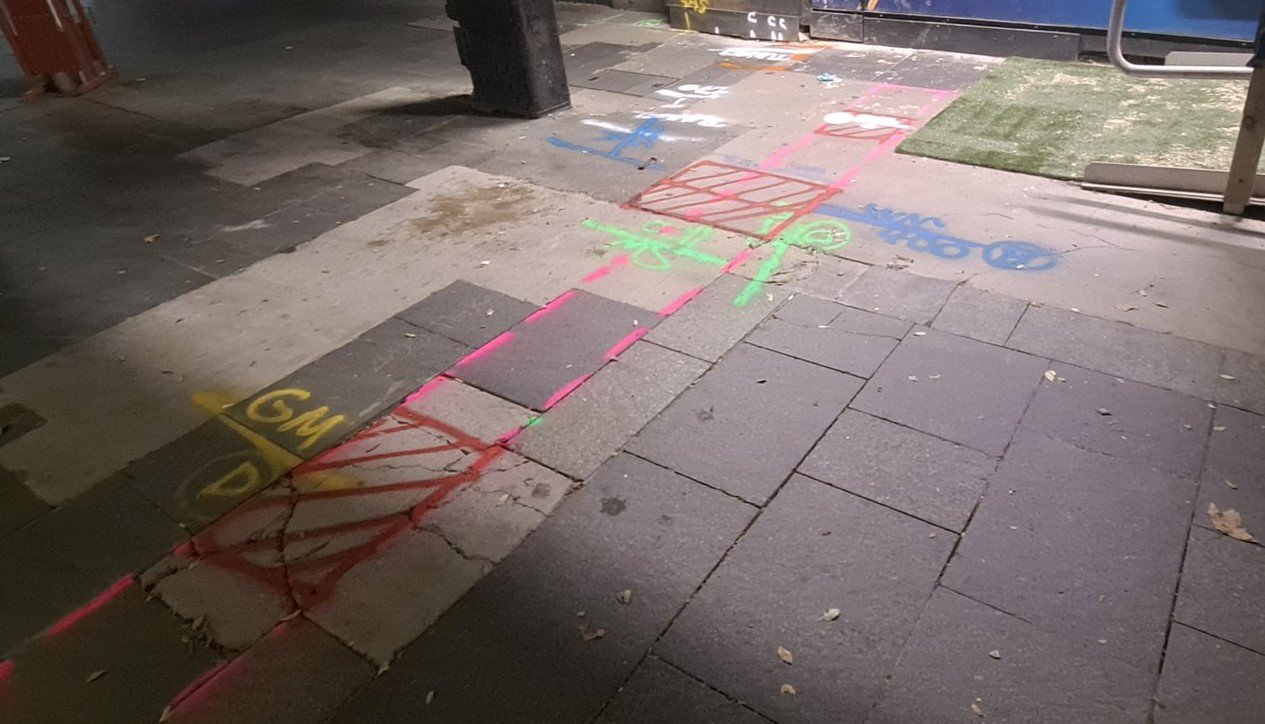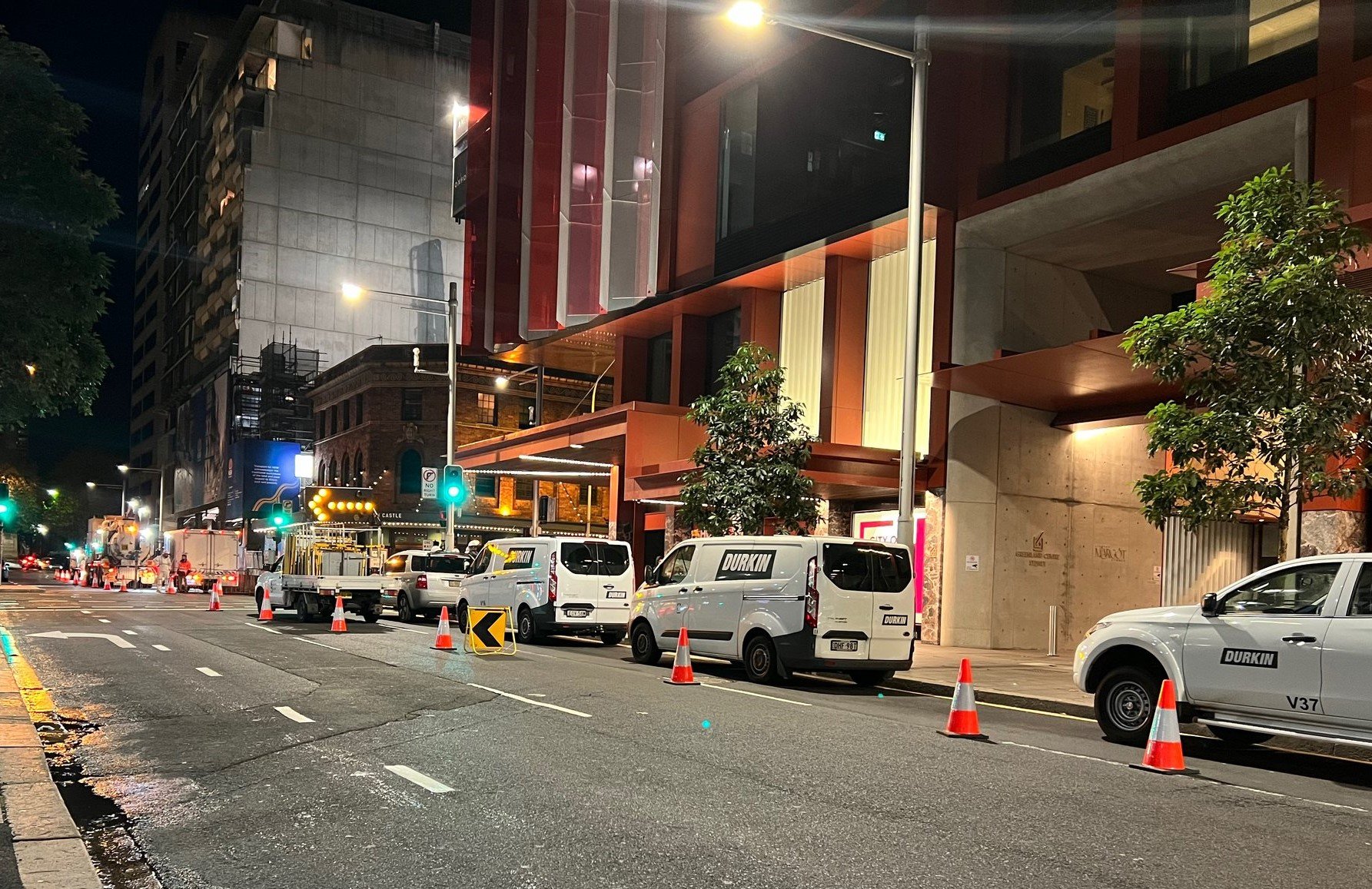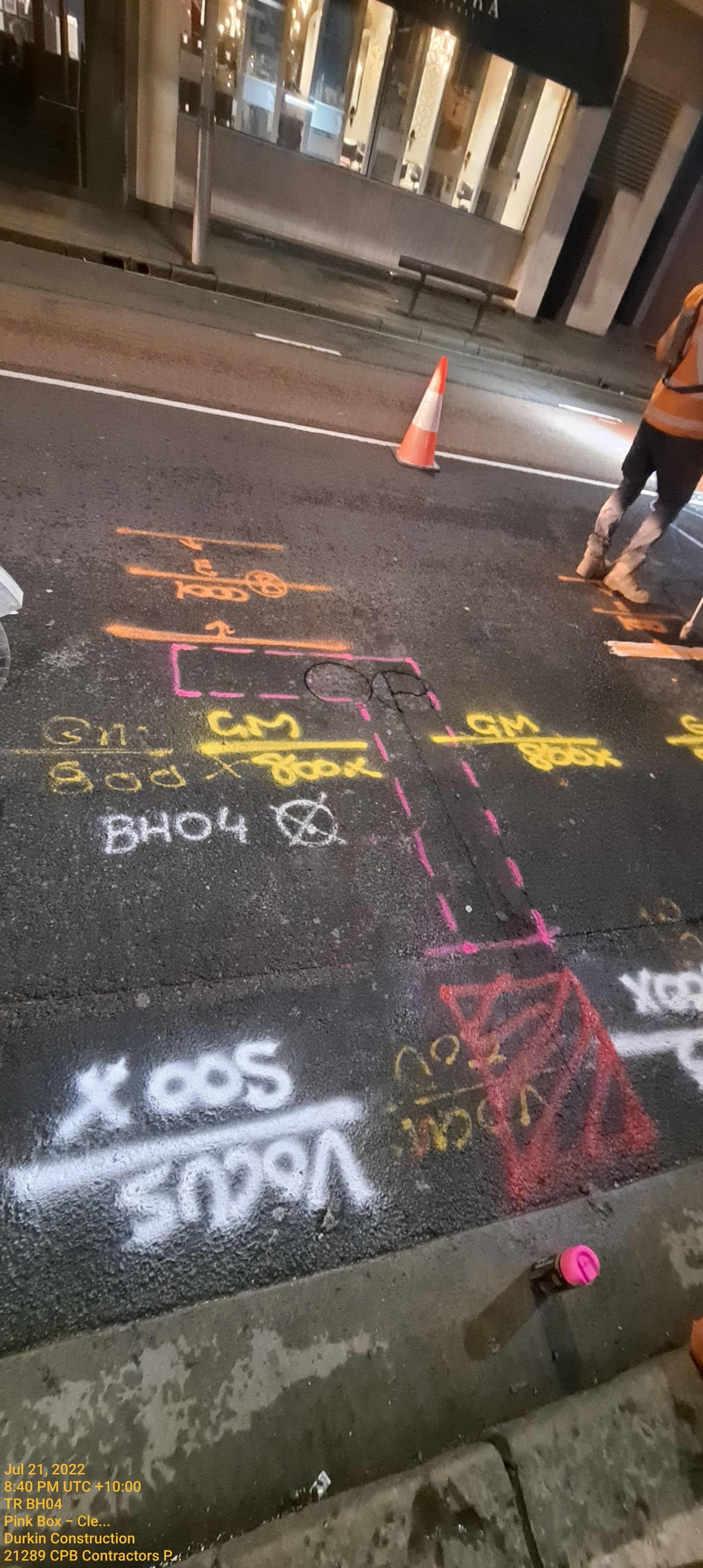Case Study - Metro Rail
The Metro Train Stations in Sydney are currently being constructed throughout the city, with a couple of platforms being built and integrated station developments delivered at the site.
As part of the upgrade, the new design required construction to be carried out around the outer limits of the Pitt Street site and also the installation of the new street smart poles.
Before proceeding with the construction, and cutting the thick bound layers with the footpath and the road, the contractor needed to have the site surveyed to confirm if there were any utilities clashing with their proposed design. They wanted to know if their design was feasible and whether it was safe to go ahead with the construction, or if it required redesigning.
In 2020, Durkin Construction had undertaken the utility investigation with the same scope of work for the contractor, so they approached us again in May 2022 to partner together on this project.
The scope of work included:
QL-B Utility Surveys
QL-A Utility Surveys
Completing over 20 trenches for various design requests (e.g. new smart pole locations, new pram ramp locations, etc.)
Clearing 8 Borehole locations with 'L-shaped' trenches.
According to Durkin Construction Senior Project Manager Gary McPeake, when they received the original scope of works, they prepared a reverse scope by overlaying the proposed locations on the previous survey plan Durkin had done for the client. The project requirement was to identify any potential clashes with existing utilities and surface features.
“There’s a lot of utilities in the area, everything from gas, electric, and water, to optic fibers, a Telstra tunnel, and more,” said Gary.
“So, we needed to ascertain where it is safe to work for the contractor, and that there are no utilities clashing with where the new street smart poles were going to be located”.
“After agreeing on the scope of the project, we had to plan and prepare the safety documentation, including the site-specific HRSWMS, which would form the basis of our approach to the project,” he added.
Limitations and Challenges Slow Down The Work Progress
As the location of the worksite was within the CBD, Durkin crews had to work with multiple limitations and challenges that slowed down the progress of the project.
“The client has an out of hours permit so there were out of hours limitations in place, restricting us from noisy works like saw cutting and jackhammering after 12 midnight. That was the cutoff time for us,” said Gary.
“We could, however, do other works after that. However we needed to work very efficiently during those few hours when we got the road occupancy license”.
“When working on the road, it was not possible to start the job without water barriers and construction vehicles in place”.
“The use of water barriers was even more challenging because it would easily eat up a couple of hours from an already-limited work window. So, by the time our crews were ready to start working, they had an even shorter time slot available to carry out the noisy work”.
“Another limitation was that we couldn’t work in one section of the project for more than 2 consecutive nights,” he said.
Besides these constraints, some digging on the site unexpectedly revealed heritage finds, and the Durkin crews were bound to follow the due process and report it to authorities before they could proceed.
“An old heritage kerb was found within a trench, which stopped works at one section for approximately 2 weeks,” explained Gary.
“A bone was found in another trench, which turned out to be the remains of an animal. However police and forensics had to be called in for investigation, stopping the works in that section for a week”.
“A Sydney Water Stormwater asset running down Pitt Street required a specific methodology for working around the asset and needed vibration monitoring,” he added.
Despite all these limitations, Durkin managed to execute the project, only possible because they had planned well for it, and everyone knew what they could achieve with each shift.
Project Planning, Permits and Paperwork
Keeping in mind the limitations and constraints, planning for the project was challenging as Durkin was seeking answers to a lot of questions.
“Yes, it was difficult for us. We weren't entirely sure what working hours we could get, and to just put the different limitations working on top of the services, it was just going to be very difficult,” said Gary.
“In terms of preparing for the project, as the client was a tier one company, there was quite a lot of paperwork required before our teams could go out on site”.
“Project Specific inductions, online inductions, and before we start, a permit to excavate as well. It had to be signed off by a permit holder from Durkin and a permit issuer from the client as well”.
“It was to ensure that we've checked off all the boxes, and we're doing everything in as safe as possible manner,” he explained.
Overcoming The Challenges and Executing To Perfection
The Durkin crews managed to complete an extremely challenging job seamlessly, and it was possible with the team's meticulous planning and thorough teamwork, working efficiently along with the nominated NDD subcontractor.
“We had all the information on their previous plans and models that we had sent during the initial investigation, so it was a good starting point for us,” said Gary.
“It was a matter of updating the survey data along with photo cards to show each trench location with all the services details and depths. In short - it was updating their existing survey data to be more accurate”.
“But, we had to ensure the works were planned as best as possible. The client’s Environmental team could prepare the correct Out of Hour plans for community notifications as required”.
“The entire crew used to work together as a team at the beginning of each shift to place water barriers/vehicles in the correct place to maximise working time for noisy works or if traffic control setups had to change,” he explained.
The real challenge for the proposed investigation works involved cutting the thick bound layers on the footpath and road (either by road saw or by coring). The main concern for completing this type of work is the risk of striking shallow utilities. To make sure there were no utility strikesand everything went smoothly, Durkin implemented a 'Pink Box, Red Box' procedure to highlight the areas that are safe/not safe to cut via road saw or coring.
“We had to determine whether it was safe to cut the footpaths because the bound layer was quite thick. So, we came up with a ‘Pink Box, Red Box system’,” Gary said.
“We marked pink boxes on the ground where it was safe to cut and red boxes where it was unsafe to saw cut because the utilities underneath were quite shallow”.
“It's just another safeguard measure that we implemented to identify different sections because we were working with a subcontractor who had to take care of all the saw cutting. So it was probably the easiest way to explain to them where it’s acceptable to cut and where it’s not”.
“Everybody understood it well, and we walked through the scope each shift and highlighted the areas that were of any concern and made sure everybody has an understanding of the issues on site. This was included in the Permit process. So, it all went fairly smoothly without any issues,” he explained.
Besides the ‘Pink Box, Red Box’ approach, the Durkin teams carried out additional scans using the concrete imaging (GPR) unit to determine if there were any embedded utilities within the bound layers of the footpath or road.
While the project is still ongoing, we managed to overcome most challenges, and despite the slow progress, we completed the majority of the work by the end of August and September. Everything went according to the plan and we expect to end this project soon.


